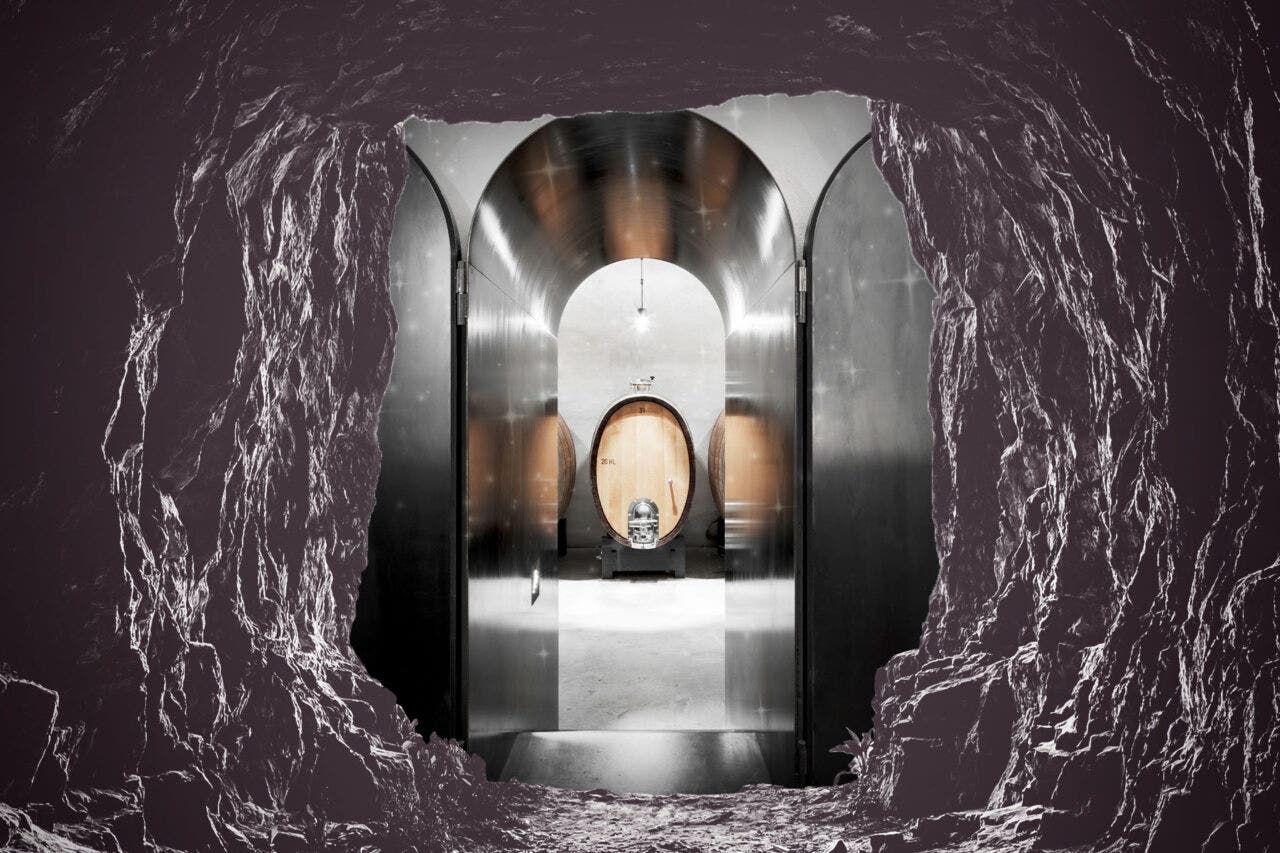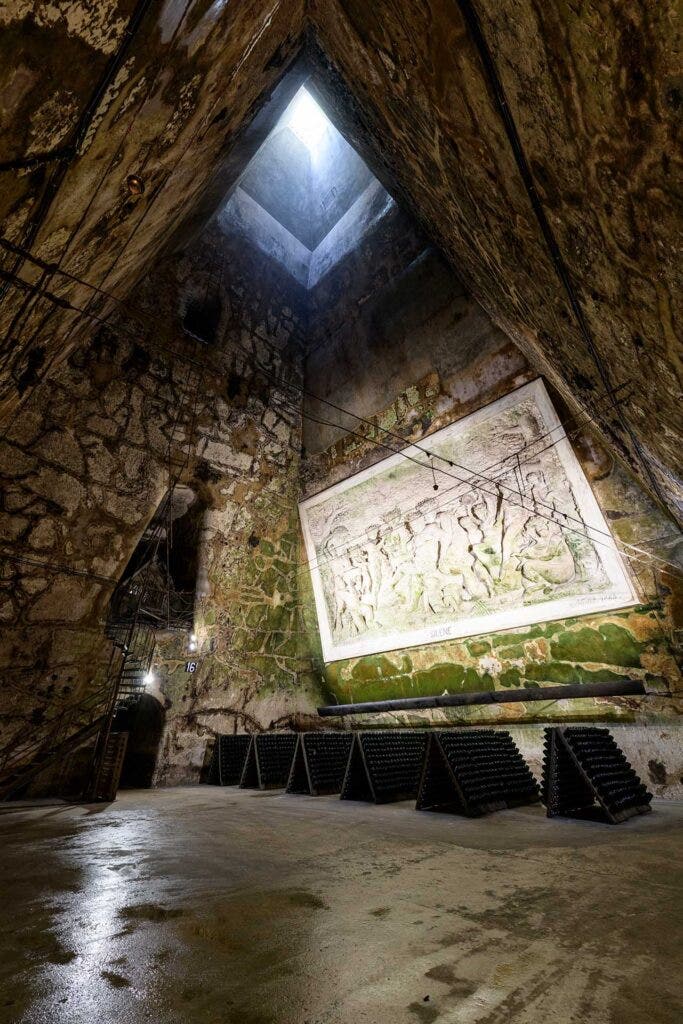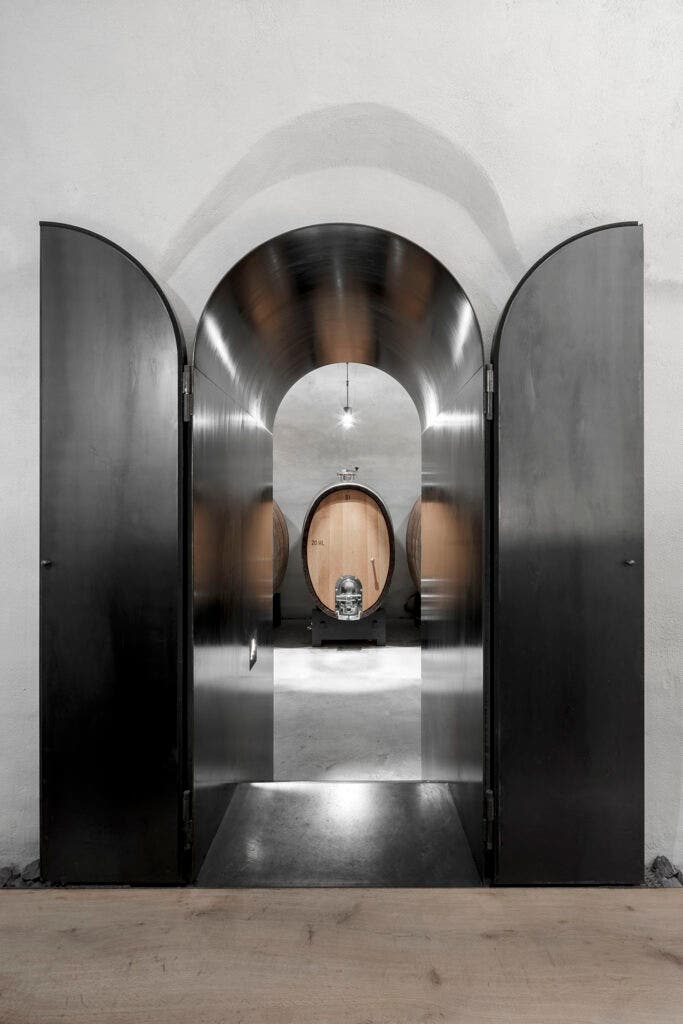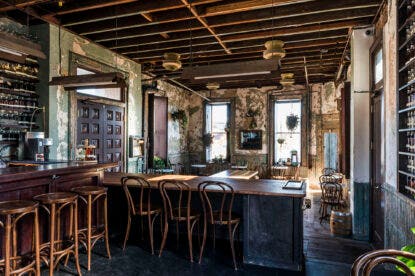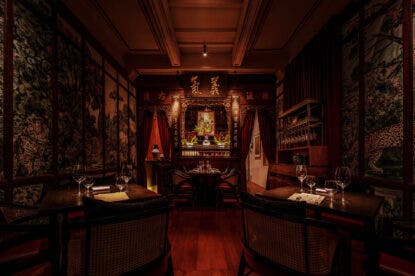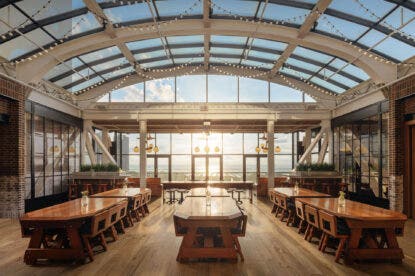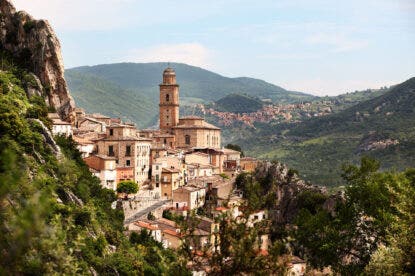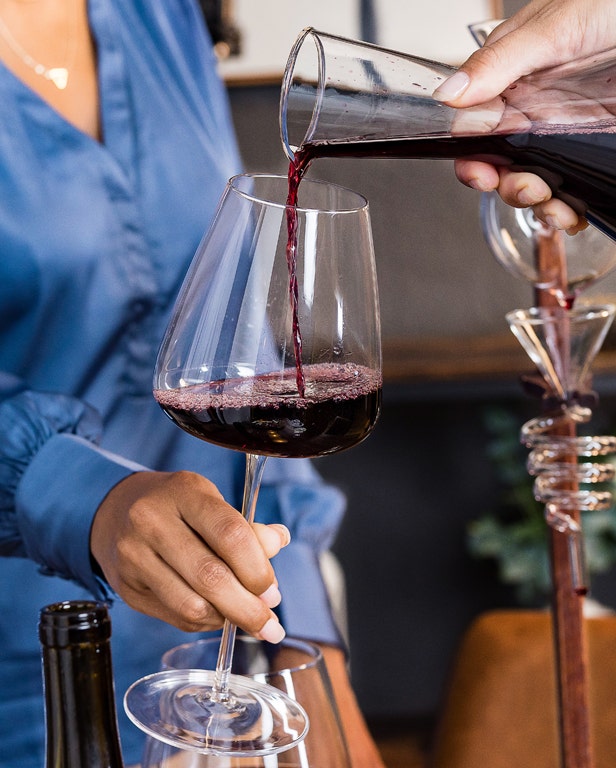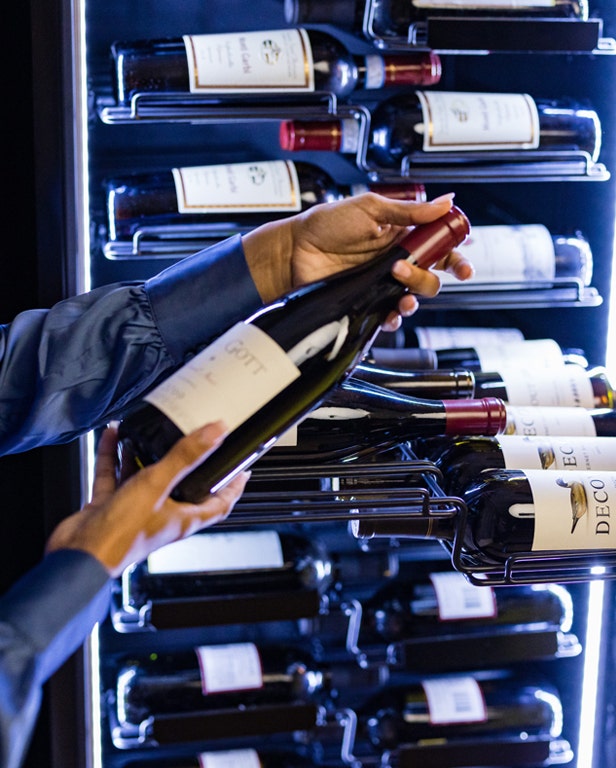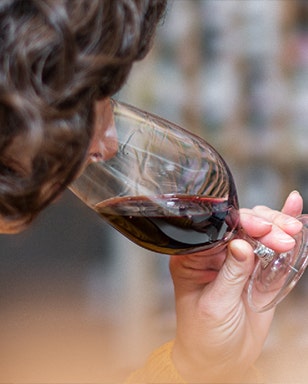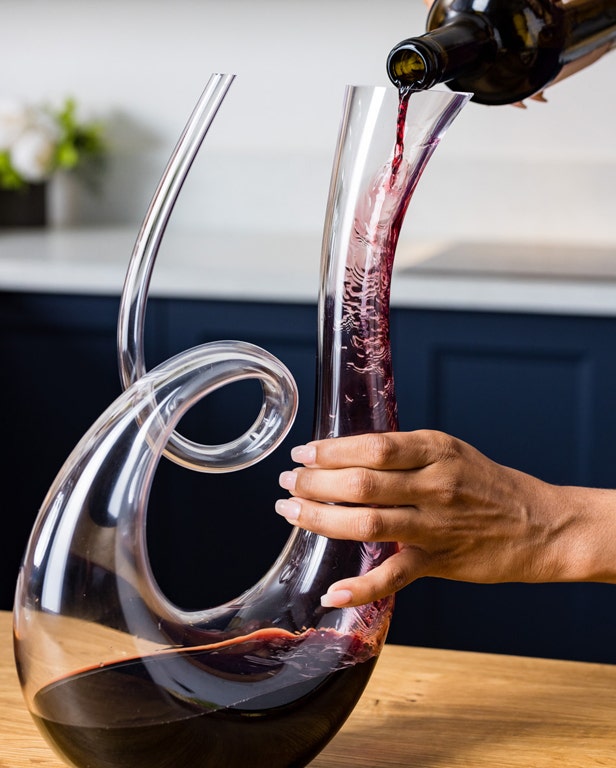From rocky and rough-hewn to sleek and chic, wine caves and cellars encourage designers to merge form and function in imaginative ways. There’s undeniable drama in a dark, underground space, and talented architects seize the opportunity to transform these utilitarian storage facilities into atmospheric venues for tours, tastings and even art exhibitions.
Here are eight striking examples of wine caves and cellars with outstanding design, found in locations all around the world.

Bordeaux, France | Château Les Carmes Haut-Brion
Design by Philippe Starck and Luc Arsène-Henry
Clad in sleek panels of stainless steel, the Château Les Carmes Haut-Brion wine cellar plunges like an elegant and enormous knife into the Peugue river. An artful collaboration between renowned designer Philippe Starck and architect Luc Arsene-Henry, the blade-like shape also cleverly references a ship’s hull, in honor of the maritime history of Bordeaux.
The structure is divided into four levels, including reception and winemaking spaces. The vat room features 23 stainless steel, oak and concrete vats, and the winery invited guest artists—including Ara Starck—to cover them in original paintings.


The lowest level stores 300 barrels, which benefit from the cooling effect of the water that flows outside the cellar walls. The surrounding vineyards are planted to grape varieties including Cabernet Franc, Cabernet Sauvignon and Merlot. Guided tours and tastings are available by request.

Reims, France | Domaine Pommery
Concept by Louise Pommery
Louise Pommery was a visionary in both Champagne and design. Based on her belief that extended periods of cellar-aging produced better Champagne, Madame Pommery set her sights on a piece of land that was being used as a dump and saw its potential.
Hidden nearly 100 feet below the surface was a series of 60 abandoned Gallo-Roman pits (crayères), where chalk had been extracted to build the city’s early structures. In 1869, Madame Pommery sent miners down to start converting the forgotten spaces into wine cellars, connecting the chalk pits with a vast, 11-mile-long network of tunnels.

In 1880, she commissioned Gustave Navlet to create a series of sculptural relief panels based on bacchanalian themes to embellish the rough walls. That artistic tradition continues today, as Domaine Pommery uses these subterranean spaces as a gallery for contemporary art installations. Recognizing their historic significance, UNESCO has also declared the Champagne Hillsides, Houses and Cellars of the region as a World Heritage Site. Pommery offers a variety of tours and tastings.

Kelowna, British Columbia | Mission Hill Family Estate
Design by Olson Kundig
At firm Olson Kundig, designers created cellars for Mission Hill with an atmosphere of time-traveling grandeur. Rows of oak barrels age in two vaulted spaces with walls hewn from raw volcanic rock. Lighting is dim, with natural rays shining through a single oculus, and temperature and humidity are carefully controlled.


Behind an iron gate, the designers have created a private vault with the solemn mood of a chapel where a display of ancient wine vessels dating back 10,000 years accompanies a library of Mission Hill vintages. Wines produced at the estate include Pinot Noir, Cabernet Sauvignon, Merlot, Syrah, Chardonnay, Sauvignon Blanc, Riesling, Pinot Blanc and Pinot Gris. The Behind Closed Doors tour includes a visit to the underground barrel cellar plus a wine tasting.
Neustift, Italy | Hotel Pacherhof
Design by Bergmeisterwolf Architekten
Built on a sloped site in the South Tyrol and capped by an angular shard of a tower clad in burnished bronze panels, the Hotel Pacherhof’s new wine cellar mimics the craggy shapes of the mountain peaks that surround it. Upstairs, the team from Bergmeisterwolf Architekten designed the office and tasting room spaces. Downstairs, they connected new spaces for grape harvesting and wine production with the hotel’s historic cellar.



The result has a timeless minimalism, with traditional oak barrels and stainless-steel tanks framed by vaulted ceilings and rough plaster walls. The Pacherhof vineyard—planted on land that the Pacher family has owned since the 12th century—produces wines including Müller Thurgau, Sylvaner, Grüner Veltliner, Pinot Grigio, Kerner, Riesling, Gewürztraminer and Sylvaner. Guided tours and tastings are available.

Gavorrano, Italy | Rocca di Frassinello Winery
Design by Renzo Piano Building Workshop
The impressive cellar at the heart of Tuscany’s Rocca di Frassinello winery was inspired by the form of an amphitheater. It’s a powerful, 131-by-131-foot space with echoes of antiquity, populated by row upon row of oak barrels—2,500 in all.
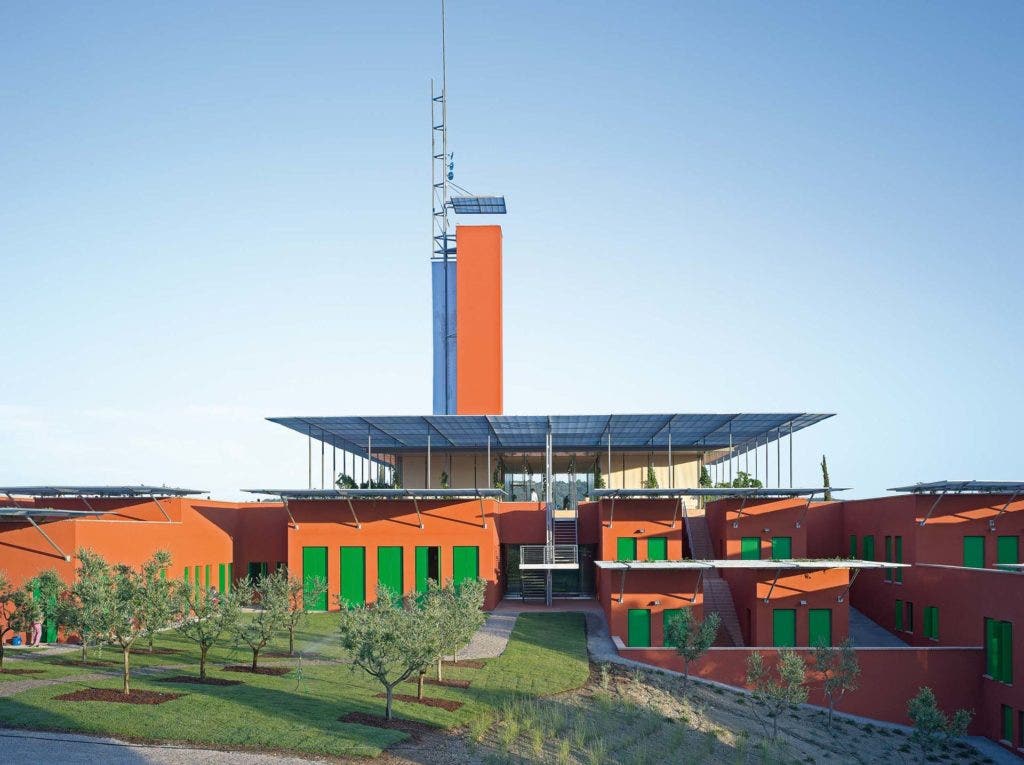
By prioritizing the cellar in a central position beneath the winery, famed architect Renzo Piano emphasized the cellar’s crucial role in the overall winemaking process while also ensuring stable temperature and humidity in the space. Rocca di Frassinello is known for its Merlot, Cabernet Sauvignon, Vermentino and Sangioveto wines, and also produces grappa. Guided tours are available by reservation, and include a stop at an Etruscan archaeological site located within the grounds of the estate.

Napa, California | Jarvis Estate
Design by William and Leticia Jarvis with Sasaki Associates
When William and Leticia Jarvis founded their winery in 1990, they made the decision to build the entire production facility in caves carved out of the Vaca Mountains. The concept, devised with the help of a team of engineers, took the shape of two concentric circles, allowing winemakers to always stay within 200 paces of the barrels, and providing room for the barrels to be stored in a single stack.

However, when the excavation began, builders discovered a natural subterranean waterflow that prevented them from completing the interior circle. But what could have been a problem actually became an advantage. Designers created a waterfall for a splash of underground flair, and the increased humidity now benefits the barrel aging process.
The completed cave complex encompasses 45,000 square feet, and the estate is known for its Cabernet Sauvignon, Chardonnay, Petit Verdot, Cabernet Franc, Merlot and Tempranillo wines. Tasting tours are available.

Paso Robles, California | Booker Wines
Design by Signum Architecture
Booker Wines winemakers and Signum architects conceived this cave as a multi-purpose space. It features storage for 1,500 barrels, a 1,000-bottle wine library and cool hospitality area to escape the heat of Paso Robles. Designers played with exposed limestone, white plaster walls, rusted metal and cedar to create landscape-inspired, contemporary settings with comfortable, oversized seating.

The certified organic vineyard is known for wines blending Rhône varieties, including Grenache, Mourvèdre, Syrah and Viognier. Tours of the winery are available, including a Cave Experience that offers guests a private tasting and time for subterranean lounging while listening to vinyl.

Ithaafushi Island, Maldives | Waldorf Astoria Maldives Ithaafushi
Design by Stickman Tribe
In an island setting better known for its overwater villas than underground caves, the Waldorf Astoria Maldives Ithaafushi offers guests a taste of adventure in their wine cellar, known as “The Rock.”
The Indiana Jones-worthy entrance designed by Stickman Tribe includes a circular seating area that’s warmed by a fire cauldron, and guests might imagine they’re discovering a secret lair as they descend into a cool, contemporary cave crafted from pale Jordanian limestone.

The resort offers special multi-course wine dinners for up to 12 guests, seated around a communal table fashioned from 200-year-old Jarrah wood. The cellar holds one of the most extensive wine collections in the Maldives, counting over 2,000 bottles.
Last Updated: September 28, 2022




